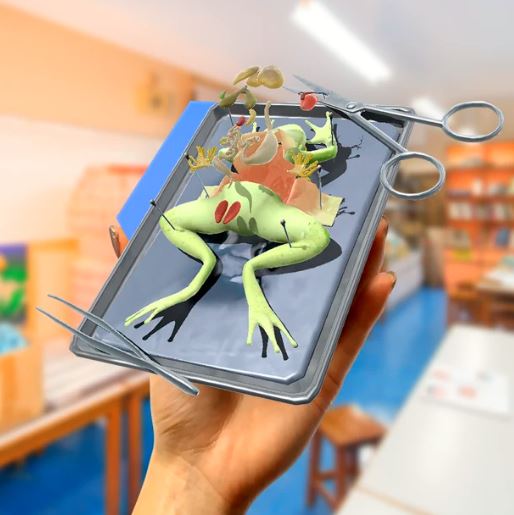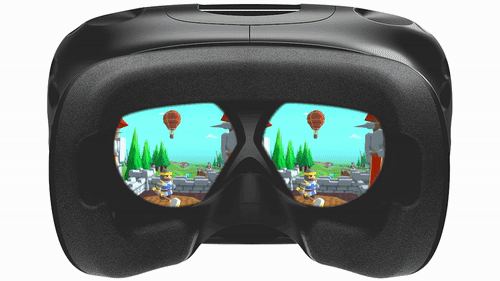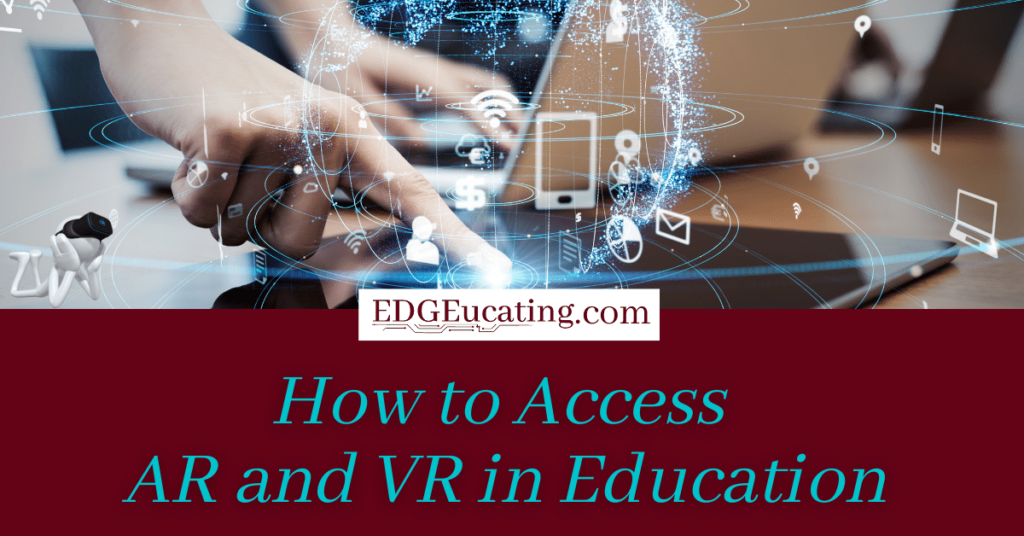Educators today are seeking cutting-edge resources for education that bring lessons to life, increase student engagement, and help learners develop essential 21st-century skills. When combined with thoughtful teaching strategies, these tools make classrooms more inclusive and effective. Below are six standout technologies that integrate augmented reality, gamified learning, inquiry-based learning, and STEM education into everyday instruction.
The pandemic presented educators with many challenges and adapting to online classes opened doors to resources that had previously been untapped. Educators have also had to adapt to the restrictions placed on schools related to field trips, guest speakers, and cooperative learning, and inquiry based learning opportunities that often rely on real-world exploration. Augmented Reality (AR) and Virtual Reality (VR) are systems that played major roles in assisting educators in overcoming restrictions, adapting lessons, and reaching more students. Although the pandemic has pasted – THANKFULLY! – education is still facing rapid changes from budget cuts to meeting the needs of industry, making AR and VR still very viable solutions.
For more information on AR and VR in the classroom, visit the article AR and VR in the Classroom. It is a great article with details about why AR and VR in education are so important.
There are two concepts to consider related to AR and VR in education. First is the hardware and systems needed to access and run the programs. The second is the software and applications that will be accessed using the hardware. In this article, I will discuss each of these and several examples that have proven to be high-quality resources for the average classroom.
AR and VR Systems or Hardware

Before a student can access quality AR or VR software in education, they must have the appropriate hardware. Two items that the average classroom has regular access to is a basic desktop computer or a tablet. These tools can serve as powerful tools for inquiry-based learning projects when paired with AR and VR apps.
Additionally, funds could be used to purchase other types of technology, like AR and VR systems or hardware. So let’s dive into some systems or hardware that have proven to be of high quality and readily available to an average classroom.
Microsoft Windows Mixed Reality
Microsoft offers tablets and computers that are compatible with all of the available apps on the market right now. Microsoft also offers an abundance of professional learning opportunities. This aspect of their site is extremely beneficial and discusses not only their hardware and software but also how to apply it in the classroom. This professional development includes Using Office 365 apps in the classroom, Self-Paced Professional Development, and live professional development sessions.
Umety: Immersive Learning Through AR & VR
Umety provides teachers and students with immersive virtual reality (VR) experiences. Lessons that are traditionally abstract—such as exploring the human body or visiting historical sites—become interactive and memorable when students can “step inside” their learning. Umety supports a wide range of subjects, offering flexible modules that enhance critical thinking for kids, collaboration, and student engagement across grade levels.
Apple AR
Apple® products are designed for Augmented Reality experiences and include high-quality cameras, advanced displays, motion sensors, and graphics processors. Support for AR is built directly into iOS and iPadOS®, so you can experience AR not only from an app, but also within Safari, Mail, Messages, Files, and more using AR Quick Look. Purchasing hardware from Apple is done directly through their Apple Education Department. These products are developed to be able to access the many apps that are also Apple® products that can be downloaded from the App Store®. Additional teacher resources can be accessed here.
Merge EDU: Hands-On AR with the Merge Cube
The Merge Cube has become one of the most popular classroom tools for interactive AR learning. With the Merge EDU platform, students can hold digital 3D objects in their hands—like planets, fossils, or cells—and explore them in a tangible way.
Merge EDU not only provides engaging digital content but also offers teacher-ready lesson plans and a safe classroom platform. Its combination of tactile play and digital exploration supports STEM education, computational thinking, and demonstrates the power of gamified learning. By merging physical and digital worlds, it gives learners the chance to explore concepts in ways that boost understanding and retention.
Apps / Sites / Curriculum

AR and VR in education is achieved through quality apps or online sites. Once a teacher has the necessary hardware, finding the best quality apps or curricula is another challenge. The different hardware I mentioned above sometimes comes loaded with specific apps, but the ability to personalize the virtual reality experience is extremely important. Listed below are portals to such curricula.
Kai’s Clan
Kai’s Clan is a unique robotic kit that turns coding into a collaborative and creative experience. Students can code robots to move across mats, complete missions, or even play chess in a gamified format. Every move on the mat is mirrored in a 3D virtual world with augmented reality, making the learning process both interactive and exciting.
Because it’s cloud-based, Kai’s Clan enables students from different classrooms—or even different countries—to collaborate in real time. This makes it a powerful tool for inquiry-based learning, computational thinking, and teamwork, while keeping student engagement at the center. Kai’s Clan brings Virtual Reality and Augmented Reality to the next level and completely submerges the student in their environment. Check out our Playbook for more information.
Nearpod
Nearpod is a site that allows access to Virtual Reality experiences in many content areas such as Social Studies, Fine Arts, Math, Science, Life Skills, English Language Arts, and more. With access to Nearpod, teachers also have access to activities that are not VR. Nearpod provides a dashboard to allow for interactive lessons. It can be used with apps that are already being used by the teacher like PowerPoints, Google Slides, and any videos. As an all-inclusive platform Nearpod can be a teacher’s access to 8500+ premade lessons that can be searched by subject or grade level and the ability to create their own lessons.
Tinkercad
Tinkercad is a free online resource for lessons and software tools to teach students to think and create. Through Tinkercad, teachers can access quality lesson plans on Art, Design, Engineering, Language Arts, Math, Science, Social Studies, and Technology. Virtual Reality lessons do not have to be accessed through a headset, a desktop computer is sufficient for Tinkercad to teach students to create 3D toys, prototypes, objects, and even Minecraft worlds, making it an ideal platform for inquiry based learning in design and engineering. By downloading MCEdit, you can get your Tinkercad designs into Minecraft. Using Tinkercad students can print 3D designs using their software and a 3D printer; thereby, making their virtual object a reality.
YouTube
YouTube is a website that has multiple videos on a variety of topics. YouTube can be searched by topic in their search bar or you can access the YouTube 360 channel that has different videos sorted by topic. These videos can be viewed through headsets or on a basic desktop. When using a desktop computer, the viewer will use on-screen controls. If viewed with a headset, the gyro controls of the headset will assist in navigating the video. YouTube is free, but it is not specifically an educational site; therefore, educators should take extra precautions to view the content before presenting it to students.
LP Bookspace
For students who struggle with reading, LP Bookspace provides an inclusive digital library filled with customizable tools. Its platform includes adjustable fonts, immersive content, and supportive features designed to improve literacy while increasing student engagement.
LP Bookspace ensures that every learner—regardless of ability—can access content in ways that build confidence and success. By incorporating LP Bookspace into classroom instruction, educators can support equity in education and ensure struggling readers stay on track academically.
Final Thoughts
As I researched the different AR and VR education resources, I focused on apps that included multiple subjects or topics rather than apps that allowed for a singular experience. When choosing the apps that are best for you, keep in mind the cost of the app and the possible applications of the content. One app may allow you to visit a zoo, while the other may allow you to visit every major zoo in the United States—expanding the scope of inquiry based learning and giving students greater choice in how they investigate topics. One app may allow you to visit Anne Frank’s house, while the other one visits all of the major sites of World War II. If these apps are all free then one with singular content may be great, but if they cost money then make sure you get the most bang for your buck.
These tools showcase how technology can transform classrooms into places of creativity, inclusivity, and innovation. From the Merge Cube’s augmented reality explorations to Kai’s Clan’s gamified learning, these tools empower students to think critically, collaborate effectively, and engage fully in their education.
At EDGEucating, we believe these resources are more than just new technologies—they’re essential teaching strategies that prepare students for the future while ensuring learning is meaningful and engaging today.


